Subsequently, the term relative risk commonly refers to either the risk ratio or the odds ratio However, only under certain conditions does the odds ratio approximate the risk ratio Figure 1 shows that when the incidence of an outcome of interest in the study population is low ( In case–control studies, the odds ratio is the appropriate effect estimate, and the odds ratio can sometimes be interpreted as a risk ratio or rate ratio depending on the sampling method 1 – 4 However, in cohort studies and RCTs, odds ratios are often interpreted as risk ratios Retrospective cohort study Case–control study versus cohort on a timeline "OR" stands for "odds ratio" and "RR" stands for "relative risk" A retrospective cohort study, also called a historic cohort study, is a longitudinal cohort study used in medical and psychological research A cohort of individuals that share a common exposure factor

The Difference Between Relative Risk And Odds Ratios The Analysis Factor
Which is better odds ratio or relative risk
Which is better odds ratio or relative risk-In the "risk" of response and a 60% increase in the "risk" of remission Risk, therefore, is used to reflect probability, regardless of the desirability or undesirability of an event 2 Relative risk is an important and commonly used Odds Ratio Why are the relative risk and odds ratio approximately equal?




Main Points To Be Covered Measures Of Association In Case Control Studies Prevalent Controls Design Odds Ratio Vs Relative Risk And The Rare Disease Ppt Download
Odds ratios are a common measure of the size of an effect and may be reported in casecontrol studies, cohort studies, or clinical trials Increasingly, they are also used to report the findings from systematic reviews and metaanalyses Odds ratios are hard to comprehend directly and are usually interpreted as being equivalent to the relative risk Subsequently, the term relative risk commonly refers to either the risk ratio or the odds ratio However, only under certain conditions does the odds ratio approximate the risk ratio Figure 1 shows that when the incidence of an outcome of interest in the study population is low (Dec 30, 16 INTRODUCTION Odds ratio (OR) and risk ratio (RR) are two commonly usedRisk ratios When risks are computed in a study, the risk ratio is the measure that compares the Risk exposed to the Risk unexposed The risk ratio is defined as the risk in the exposed cohort (the index group) divided by the risk in the unexposed cohort (the reference group) A risk ratio may vary from zero to infinity Risk Ratio = a / (ab
Risk ratios, odds ratios, and hazard ratios are three ubiquitous statistical measures in clinical research, yet are often misused or misunderstood in their interpretation of a study's results A 01 paper looking at the use of odds ratios in obstetrics and gynecology research reported 26% of studies (N = 151) misinterpreted odds ratios as risk ratios , while a 12 paper Davies et al (1) state that the odds ratio is a common measure in casecontrol studies, cohort studies, or clinical trails Unfortunately, this first sentence of their article is not correct For different study designs, OR should only be used as a measure of effect size when RR can not be estimated directlyIt is assumed that, if the prevalence of the disease is low, then the odds ratio approaches the relative risk Case control studies are relatively inexpensive and less timeconsuming than cohort studies In this case the odds ratio (OR) is equal to 16 and the relative risk (RR) is equal to 865
Converting Odds Ratio to Relative Risk in Cohort Studies with Partial Data Information Abstract In medical and epidemiological studies, the odds ratio is a commonly applied measure to approximate the relative risk or risk ratio in cohort studies It is well known tha such an approximation is poor and can generate misleading conclusions, if ODDS RATIOS and relative risks are commonly used to express results in clinical studies The results of cohort studies and casecontrol studies are best expressed as relative risks and odds ratios, respectively The use and interpretation of these ratios The difference between odds ratio and risk ratio • ericminikel The other day I was emailing with a statistical genetics colleague about a rare SNP associated with a phenotype I stated that the minor allele frequency (MAF) was 07% in cases and 01% in controls, for a risk ratio of 7 After clicking send, I felt a twinge of regret




Questionable Utility Of The Relative Risk In Clinical Research A Call For Change To Practice Journal Of Clinical Epidemiology




When Can Odds Ratios Mislead The Bmj
Relative risk vs Odds ratio Similarities They will always agree on the direction of comparison In our example above, both will agree that wine consumers have less heart disease than nonconsumers;This implausible scenario is shown in Table 5, where collapsed counts for low (or high) risk subjects only produce a 2 × 2 table with an odds ratios of 400Odds ratios (OR) are Retrospective cohort study relative risk and odds ratio Retrospective cohort study relative risk and odds ratioThe odds ratio then provides an overestimation of the risk ratio, especially when the outcome is frequent The use of logistic regression to adjust for confounding is one of the reasons that odds ratios are presented4 comments share saveIn epidemiological terms, the odds ratio is used as a point estimate of the relative risk in retrospective studies Odds ratio is the key statistic for most casecontrol studies In prospective studies, Attributable risk or risk difference is used to quantify risk in the exposed group that is attributable to the exposure
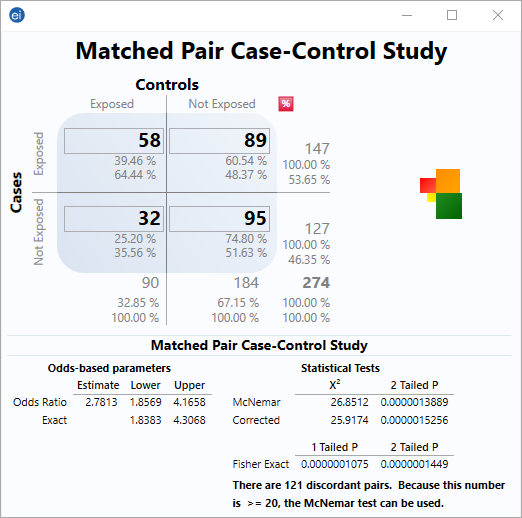



Matched Pair Case Control Statcalc User Guide Support Epi Info Cdc




How To Be Awesome At Biostatistics And Literature Evaluation Part Ii Tl Dr Pharmacy
Odds ratios (OR) are commonly reported in the medical literature as the measure of association between exposure and outcome However, it is relative risk that people more intuitively understand as a measure of association Relative risk can be directly determined in a cohort study by calculating a risk ratio (RR)Relative risk refers to a ratio between members of the population expressing the trait of interest (eg cancer), with distinction made between whether or not those members had previously been exposed to a related risk Odds Ratio (OR) Odds ratios refer to a ratio between members within a population expressing aHowever, this measure is also often presented in cohort studies and in randomized clinical trials




Definition And Calculation Of Odds Ratio Relative Risk Stomp On Step1
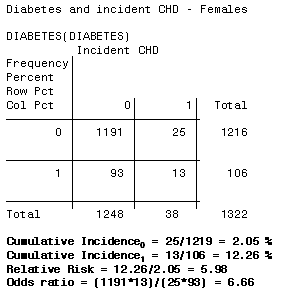



3 5 Bias Confounding And Effect Modification Stat 507
The difference between odds and probability is important because Relative Risk is calculated with probability and Odds Ratio is calculated with odds Relative Risk (RR) is a ratio of probabilities or put another way it is one probability divided by another Odds Ratio (OR) is The basic difference is that the odds ratio is a ratio of two odds (yep, it's that obvious) whereas the relative risk is a ratio of two probabilities (The relative risk is Relative measures of effect are risk ratio (ie the ratio between two incidence proportions), incidence rate ratio (the ratio between two incidence rates), and OR (the ratio between two odds) The risk difference is an absolute measure of effect (ie the risk of the outcome in exposed individuals minus the risk of the same outcome in unexposed)
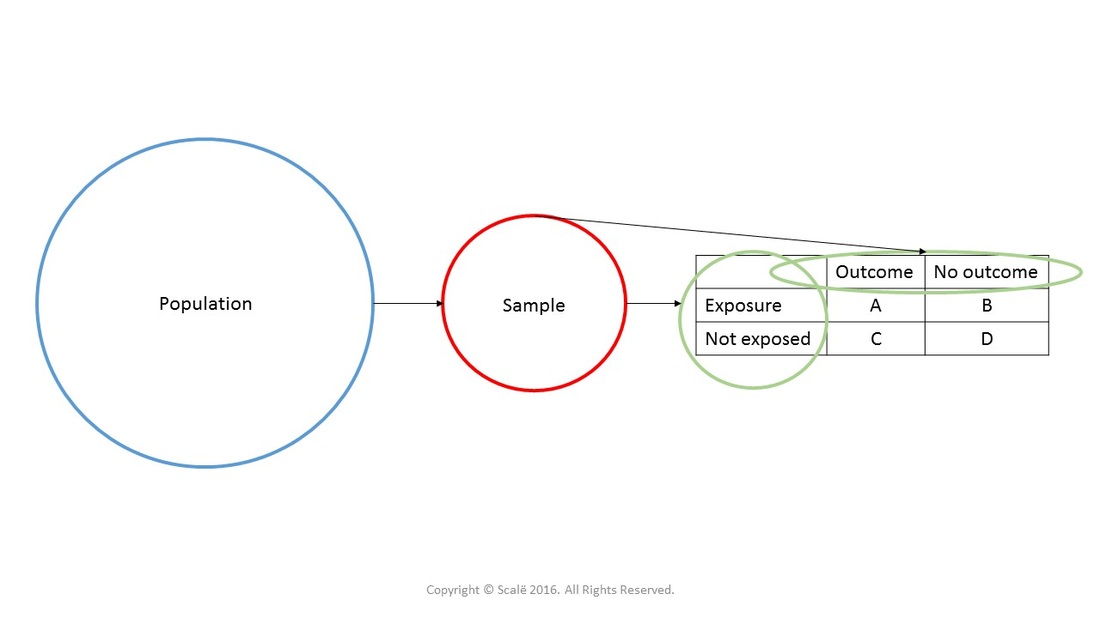



Calculate Relative Risk With 95 Confidence Intervals




Measures Of Association Ppt Download
The quote surely just means to say that the odds ratio is a relative risk measure rather than an estimate of the relative risk, which as already point out is only approximately the case in cohort studies/randomized trials for very low proportions By relative risk measure I mean something that is given relative to some comparison group in a way that the absolute difference depends onAbout Press Copyright Contact us Creators Advertise Developers Terms Privacy Policy & Safety How works Test new features Press Copyright Contact us Creators Here's the key Relative Risk looks to the future for the effect of a particular cause hence it is used in prospective studies say a cohort study Lets compare the above with Odds Ratio The Odds Ratio can be addressed by asking te following question How many times more likely is a diseased group to have been exposed to a risk factor as




Reporting The Results Sage Research Methods



Support Sas Com Resources Papers Proceedings11 345 11 Pdf
We illustrated both relative risks and odds ratios using bar charts, then looked at the types of study for which each statistic is suited We demonstrated calculation of relative risks and odds ratios through analysis of tabled data from a recent published longitudinal study, using a 2 × 2 table and R, the opensource statistical programming may be summarized in Table1and the odds ratio and relative risk are the important measures in cohort studies In a casecontrol study, the odds ratio is often used as a surrogate for the relative risk The odds ratio is the ratio of the odds of outcome occurring in the treatment Table 1 Compute the odds ratio and the relative risk For example, a relative risk of 15 would suggest a 50% increase in risk, whereas a relative risk of 05 would suggest a 50% decrease in risk Odds ratios The main difference between this and the other two measures is that there is




1 The Odds Ratio Relative Odds In A Case Control Study We Do Not Know The Incidence In The Exposed Population Or The Incidence In The Nonexposed Population Ppt Download




Comparison Of Three Methods For Estimating Relative Risk In A Cohort Download Table
Various effect measures are available for quantifying the relationship between an intervention or a risk factor and an outcome, such as the risk ratio and the odds ratio Odds ratios are intended for use in casecontrol studies in which they are an appropriate measure for estimating the relative risk;Logistic regression is used frequently in cohort studies and clinical trials When the incidence of an outcome of interest is common in the study population (>10%), the adjusted odds ratio derived from the logistic regression can no longer approximate the risk ratio The more frequent the outcome, the more the odds ratio overestimates the risk ratio when it is more than 1 orERRATA At about the 300 mark the slide says "10,00" when it is really supposed to say "10,000" I added a pop up box to fix it Thanks to Mehdi Hedjazi for




Believability Of Relative Risks And Odds Ratios In Abstracts Cross Sectional Study The Bmj




Questionable Utility Of The Relative Risk In Clinical Research A Call For Change To Practice Journal Of Clinical Epidemiology
As an extreme example of the difference between risk ratio and odds ratio, if action A carries a risk of a negative outcome of 999% while action B has a risk of 990% the relative risk is approximately 1 while the odds ratio between A and B is 10Hi, Been reading through a research paper that used a prospective cohort study, but in the results table for measures of association, the odds ratio was used instead of relative risk Odds ratio (OR) and risk ratio (RR) are two commonly used measures of association reported in research studies In crosssectional studies, the odds ratio is also referred to as the prevalence odds ratio (POR) when prevalent cases are included, and, instead of the RR, the prevalence ratio (PR) is calculated
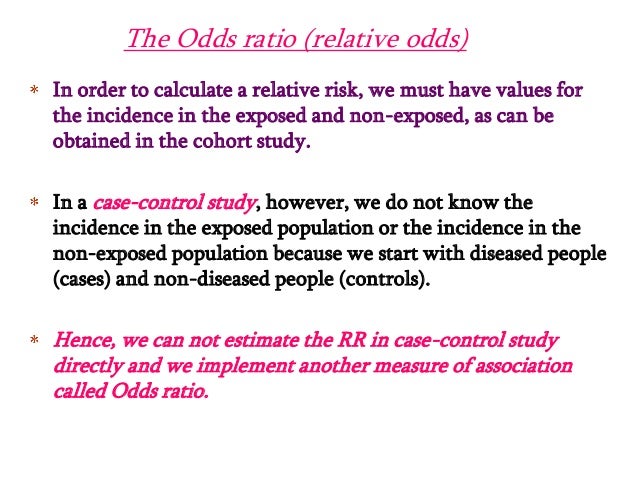



Estimating Risk




What Is The Difference Between The Risk Ratio Rr And The Odds Ratio Or Quora
Statistical use and meaning Relative risk is used in the statistical analysis of the data of ecological, cohort, medical and intervention studies, to estimate the strength of the association between exposures (treatments or risk factors) and outcomes Mathematically, it is the expressed as the incidence rate of the outcome in the exposed group, , divided by the outcome of theBased on this information, the odds ratio estimate 24 45 = = v u ˆOR = 1, indicating that low fruit/veggie "exposure" was associated with an % increase in risk The 95% confidence interval for the odd ratio parameter is calculated The ln(OR^) = and 24 1 45 1 1 1 = = u v SE ln ˆOR = Therefore, the 95% confidenceMay be summarized in Table1and the odds ratio and relative risk are the important measures in cohort studies In a casecontrol study, the odds ratio is often used as a surrogate for the relative risk The odds ratio is the ratio of the odds of outcome occurring in the treatment
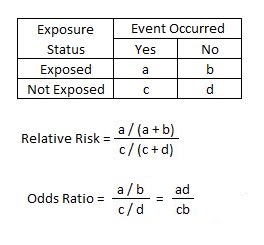



Relative Risk Article




The Difference Between Relative Risk And Odds Ratios The Analysis Factor
The odds ratio can also be used to determine whether a particular exposure is a risk factor for a particular outcome, and to compare the magnitude of various risk factors for that outcome OR=1 Exposure does not affect odds of outcome OR>1 Exposure associated with higher odds of outcome OR The measure of association between exposure and disease in cohort studies is the relative risk The relative risk is the ratio of the incidence rate of index subjects to that of control subjects A relative risk of 10 signifies that the incidence rate is the same among exposed and nonexposed subjects and indicates a lack of associationRelative risk and odds ratio The relative risk and the odds ratio are measures of association between exposure status and disease outcome in a population



Research Statistics Basics Contents 1 Basic Concepts 2 References Basic Concepts Null Hypothesis The Hypothesis That The Independent Variable Has No Effect On The Dependent Variable For Example Steroids Do Not Improve Outcomes In Ards Would Be
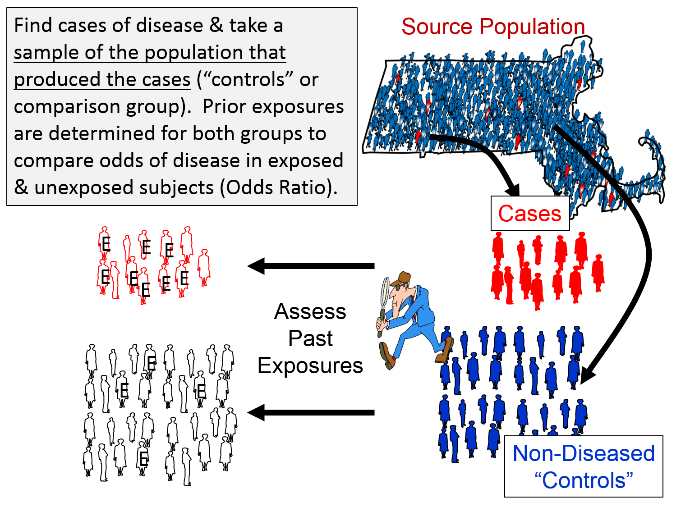



A Nested Case Control Study
Pute either the odds ratio or the relative risk to answer this question The odds ratio compares the relative odds of death in each group For women, the odds were exactly 2 to 1 against dying (154/308 05) For men, the odds were almost 5 to 1 in favor of death (709/142 4993) The odds ratio is 9986 (4993/05) There is a 10fold greaterNonexposed group, "OR" is an odds ratio from a logistic regression equation, and "RR" is an estimated relative risk Most researchers apply this formula to the adjusted odds ratio to estimate an adjusted relative risk Using the formula in this manner is incorrect and will produce a biased estimate when confounding is present 5 Odds ratio can be calculated in a cohort study and in a casecontrol study The exposure odds ratio is equal to the disease odds ratio Relative risk can only be calculated in a cohort study Odds ratio can be a measure of relative risk in case control study 6



Q Tbn And9gcs Pnxsjy3 X0gf842wm6tcfnesq2htc0kvu Tt2rst Svunqcb Usqp Cau




Forest Plot Of Relative Risks And Odds Ratios Of Lung Cancer Associated Download Scientific Diagram
Rate ratios are closely related to risk ratios, but they are computed as the ratio of the incidence rate in an exposed group divided by the incidence rate in an unexposed (or less exposed) comparison group Consider an example from The Nurses' Health Study This prospective cohort study was used to investigate the effects of hormone replacement therapy (HRT) on coronaryInterpretation of the Odds Ratio In the case of a rare disease, the population odds ratio provides a good approximation to the population relative risk The odds ratio can assume values between zero and infinity ( ) A value of 1 indicates no association between the Odds ratio vs relative risk Odds ratios and relative risks are interpreted in much the same way and if and are much less than and then the odds ratio will be almost the same as the relative risk In some sense the relative risk is a more intuitive measure of effect size



How To Interpret And Use A Relative Risk And An Odds Ratio Youtube



9 10 11 12 13 14 15 16 17 18 19 21 22 23 24 25 26 27 28 29 30 Review Odds Ratios Are Calculated From Case Control Studies Which Are Described On Slide 14 Odds Ratios Are Only Estimates Of Relative Risks Since True Incidence Rates Cannot Be
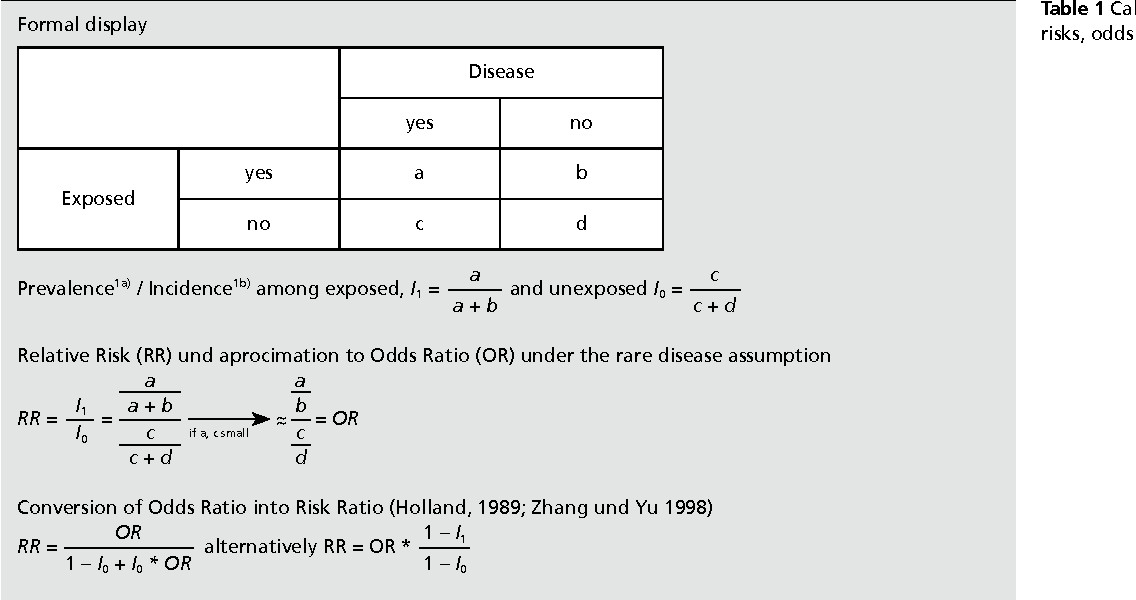



Pdf When To Use The Odds Ratio Or The Relative Risk Semantic Scholar



Interpretation Of Genetic Association Studies Markers With Replicated Highly Significant Odds Ratios May Be Poor Classifiers




Questionable Utility Of The Relative Risk In Clinical Research A Call For Change To Practice Journal Of Clinical Epidemiology
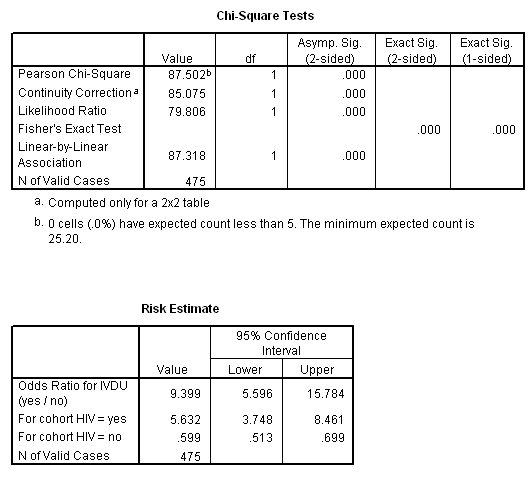



Marg Innovera



What Is The Difference Between The Risk Ratio Rr And The Odds Ratio Or Quora




Measures Of Association Blood Pressure Odds Ratio




Chapter 6 Choosing Effect Measures And Computing Estimates Of Effect Cochrane Training




Measures Of Effect Relative Risks Odds Ratios Risk Difference And Number Needed To Treat Sciencedirect
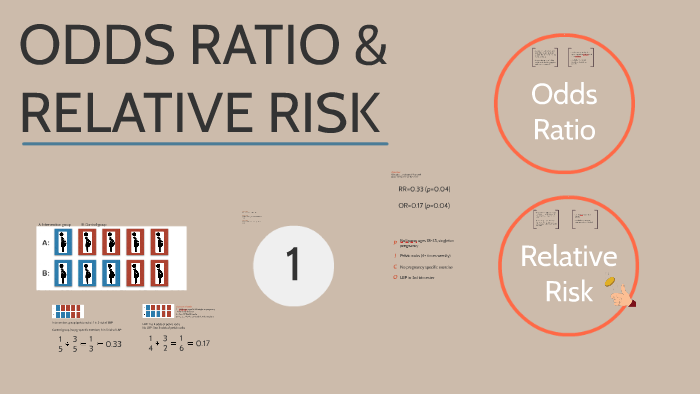



Odds Ratio Relative Risk By Susi Delaney On Prezi Next




How To Calculate An Odds Ratio Youtube




Odds Ratio Wikipedia




Statistics For Afp Dr Mohammad A Fallaha Afp
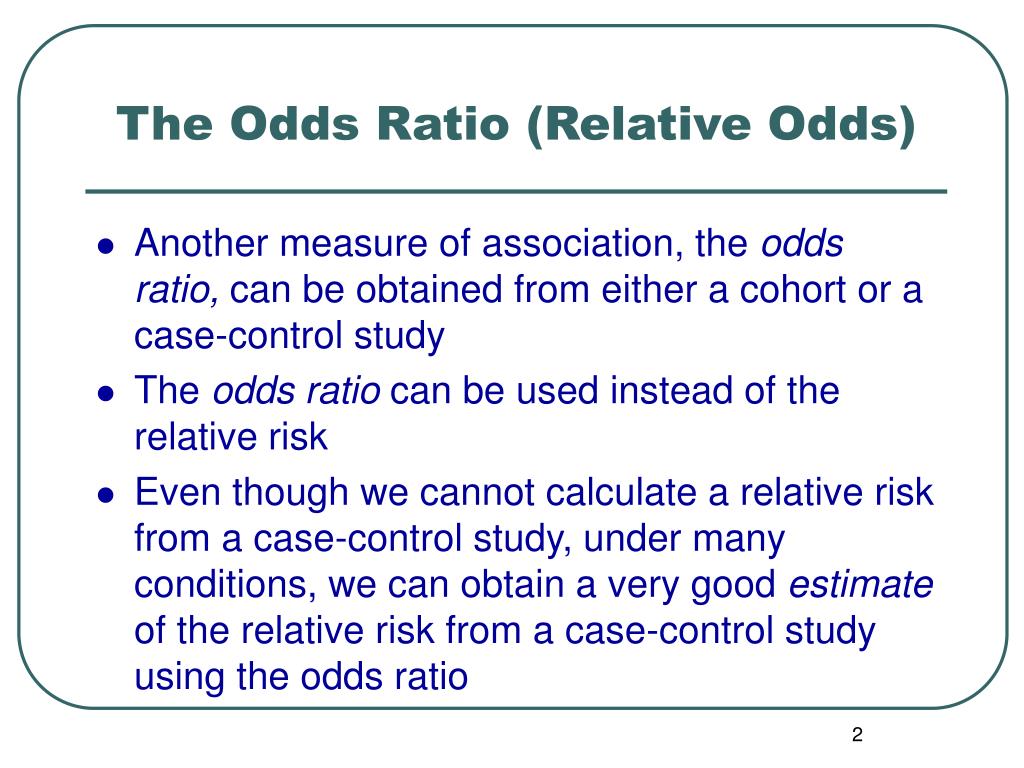



Ppt The Odds Ratio Relative Odds Powerpoint Presentation Free Download Id 6056




Society For Birth Defects Research And Prevention




Research Techniques Made Simple Interpreting Measures Of Association In Clinical Research Sciencedirect




A Practical Overview Of Case Control Studies In Clinical Practice Chest
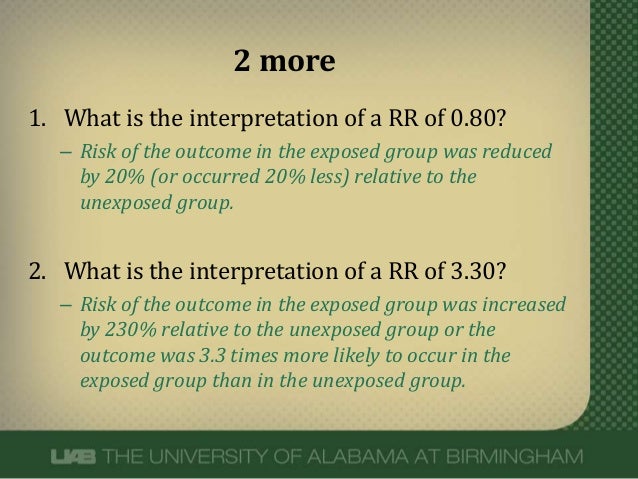



What Does An Odds Ratio Or Relative Risk Mean
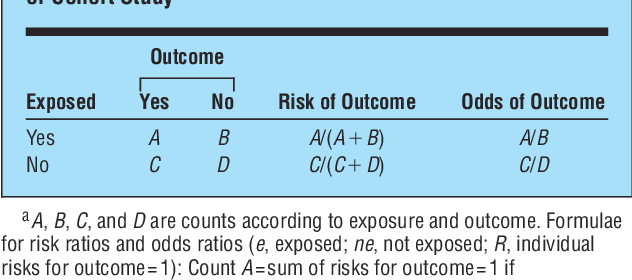



Table 1 From The Relative Merits Of Risk Ratios And Odds Ratios Semantic Scholar




Odds Ratios And Risk Ratios Youtube




Definition And Calculation Of Odds Ratio Relative Risk Stomp On Step1
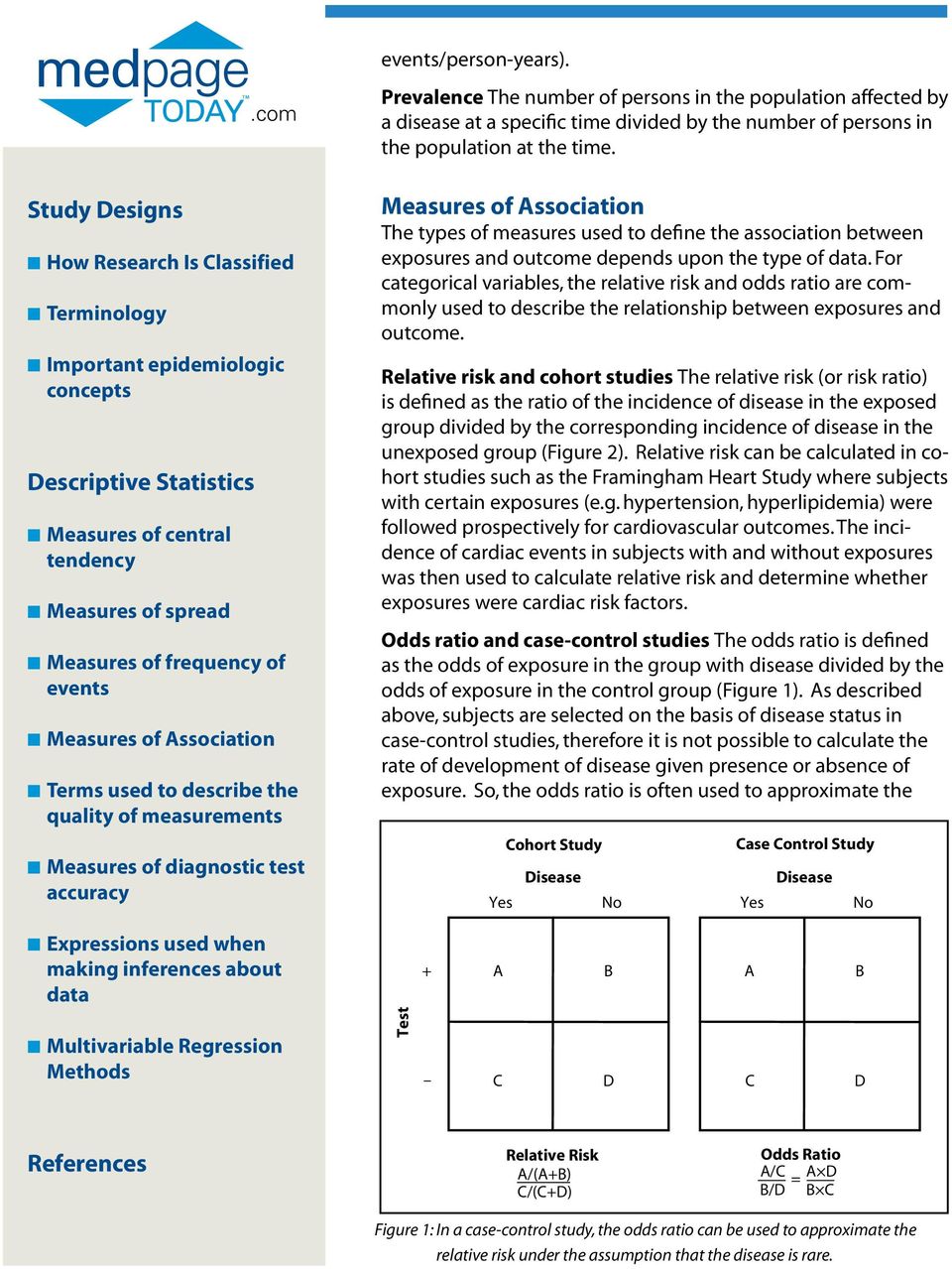



Guide To Biostatistics Pdf Free Download
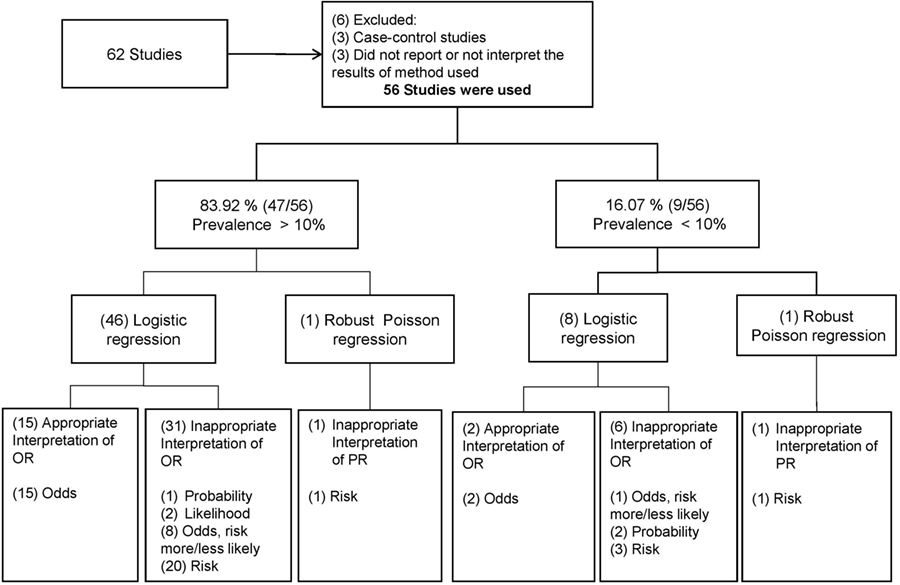



Frontiers Odds Ratio Or Prevalence Ratio An Overview Of Reported Statistical Methods And Appropriateness Of Interpretations In Cross Sectional Studies With Dichotomous Outcomes In Veterinary Medicine Veterinary Science
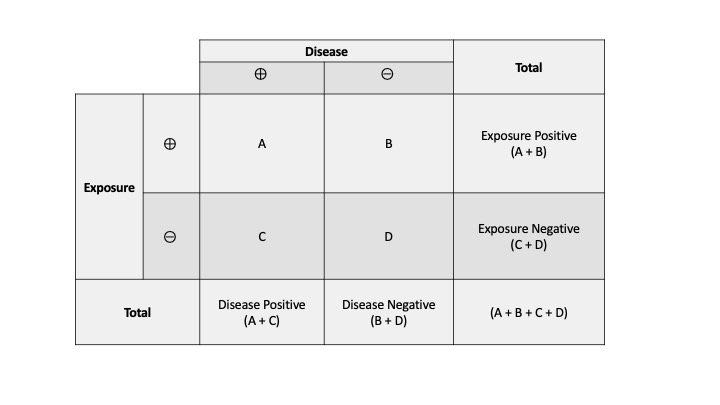



Measures Of Association Stats Medbullets Step 1
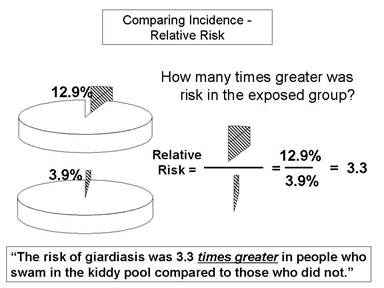



Relative Risk And Absolute Risk Definition And Examples Statistics How To



Definition And Calculation Of Odds Ratio Relative Risk Stomp On Step1




Relative Risk Or Odds Ratio For Cardiovascular Disease Incidence Download Scientific Diagram
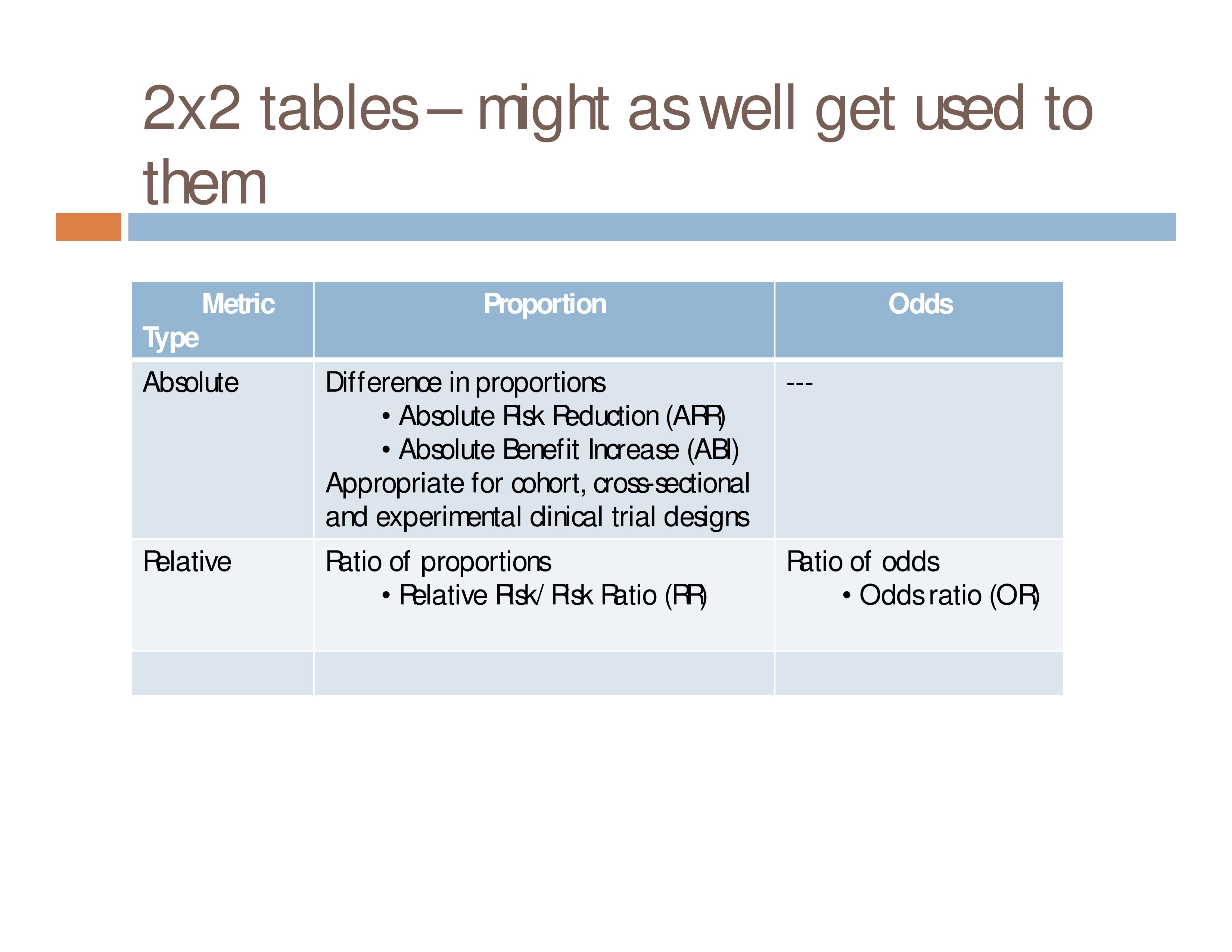



Event Based Measures Of Effect Size Asha Journals Academy
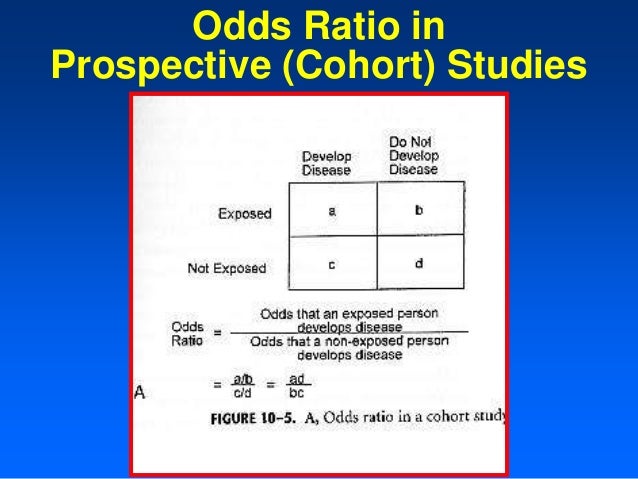



Relative And Atribute Risk



Silo Tips Download Transcript Measuring Risk In Epidemiology B D A C Measuring Risk In Epidemiology




Relative Measures Of Association For Binary Outcomes Challenges And Recommendations For The Global Health Researcher




Retrospective Cohort Study Wikipedia




Relative Risk Versus Odds Ratio Usmle Biostatistics 4 Youtube




Main Points To Be Covered Measures Of Association In Case Control Studies Prevalent Controls Design Odds Ratio Vs Relative Risk And The Rare Disease Ppt Download




Pdf When To Use The Odds Ratio Or The Relative Risk
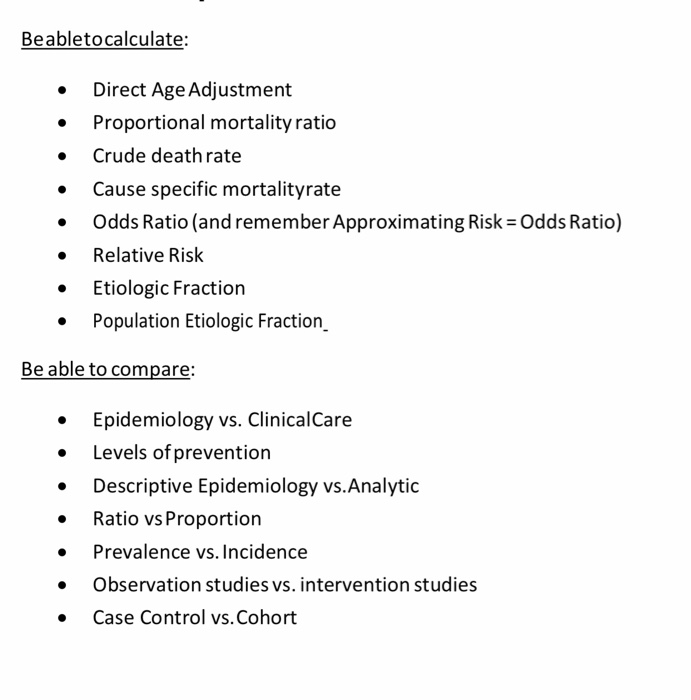



Beabletocalculate Direct Age Adjustment Chegg Com




Ch 12 Relative Risk Rr Or Flashcards Quizlet
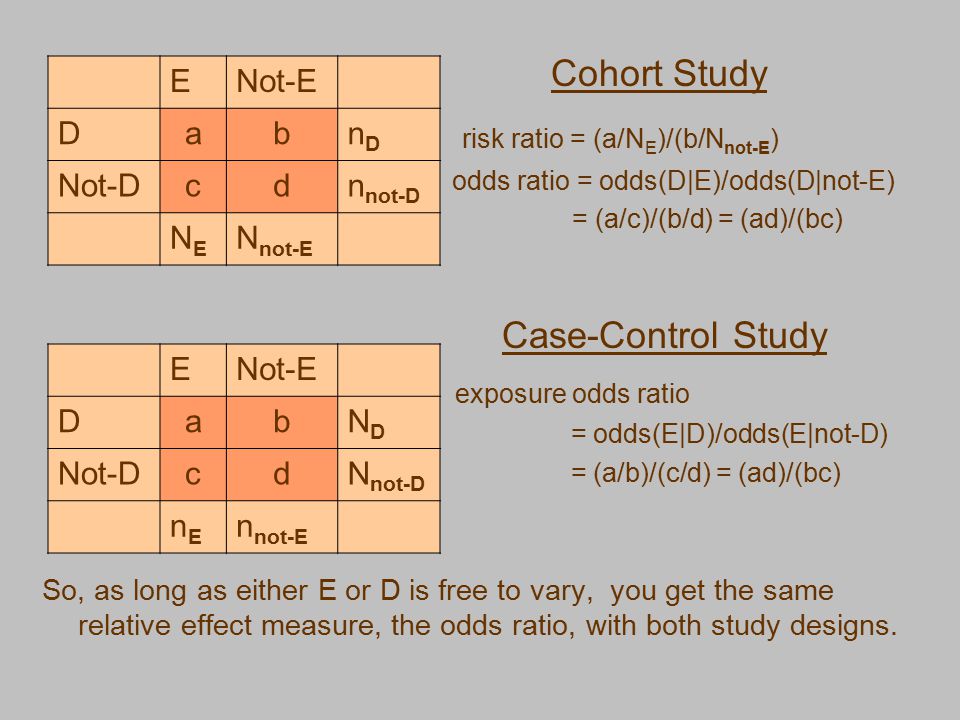



Case Control Studies Statistical Analysis Ppt Video Online Download



Http Osctr Ouhsc Edu Sites Default Files 02 Module7partinotes Pdf




Relative Risk Wikipedia
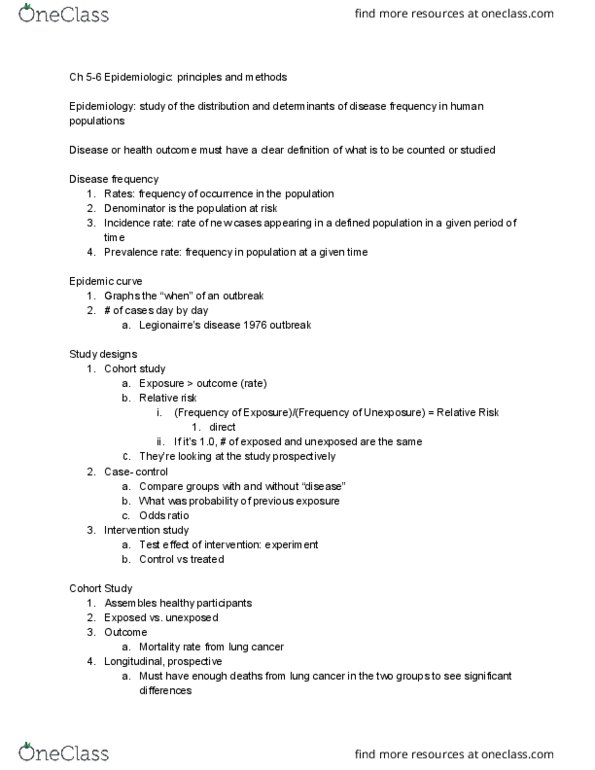



Phs 2101 Lecture Notes Summer 19 Lecture 4 Relative Risk Cohort Study Odds Ratio
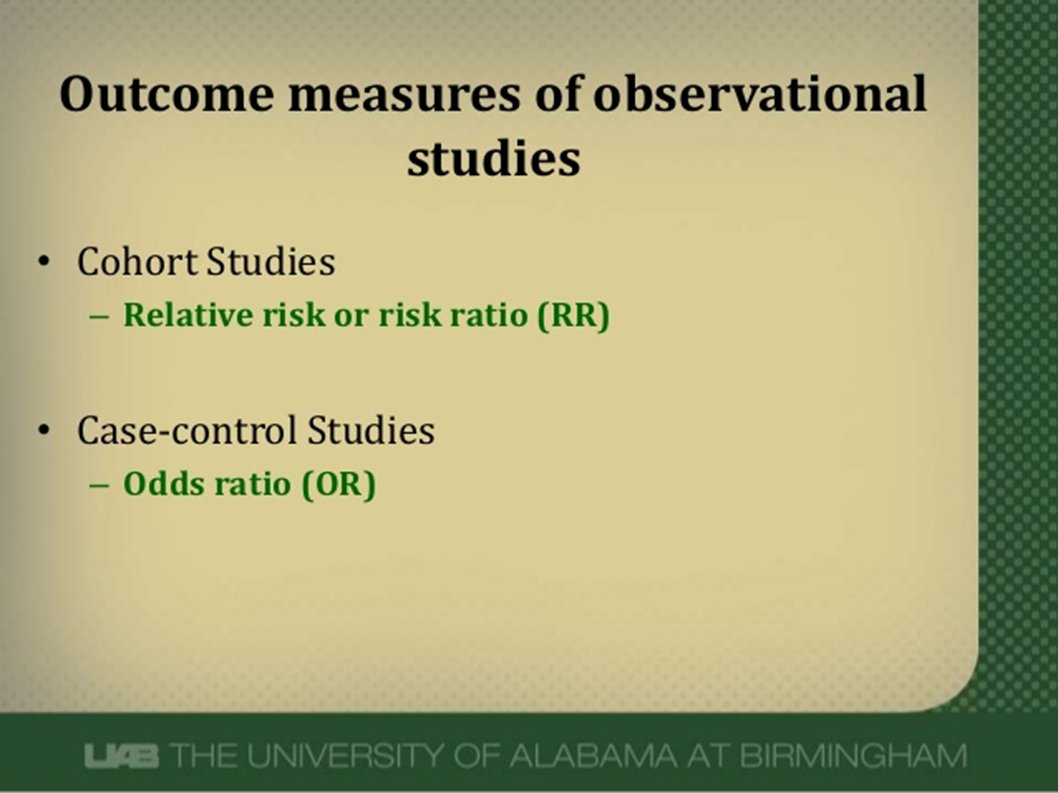



Abdullah Kharbosh What Does An Odds Ratio Or Relative Risk Mean By Ebmteacher Casecontrol Cohort T Co Shfiaepl57 عبر Slideshare
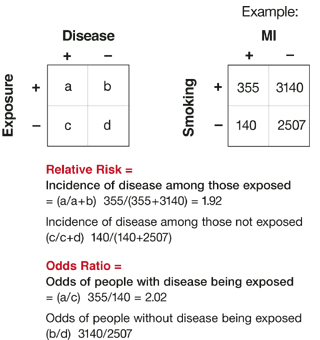



Relative Risks And Odds Ratios What S The Difference Mdedge Family Medicine
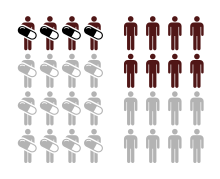



Relative Risk Wikipedia




1 Relative Risks Odds Ratios Or Hazard Ratios Of Risk Factors For Download Table




Categorical Data Ziad Taib Biostatistics Astra Zeneca February




Figure 2 From Secondhand Smoke Exposure And Risk Of Lung Cancer In Japan A Systematic Review And Meta Analysis Of Epidemiologic Studies Semantic Scholar
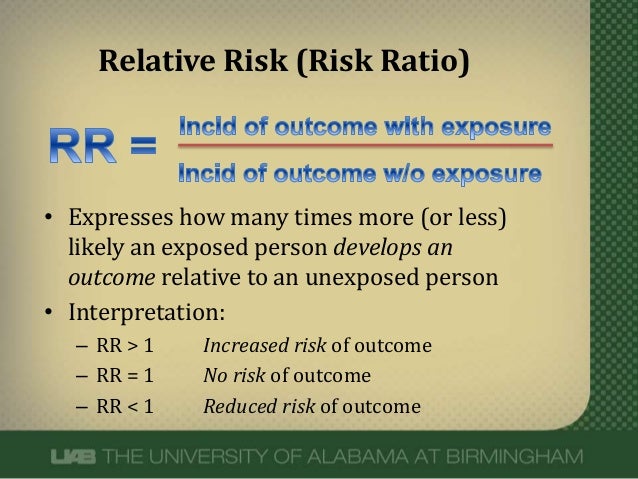



What Does An Odds Ratio Or Relative Risk Mean




A Prospective Cohort Study B Case Control Study C Chegg Com
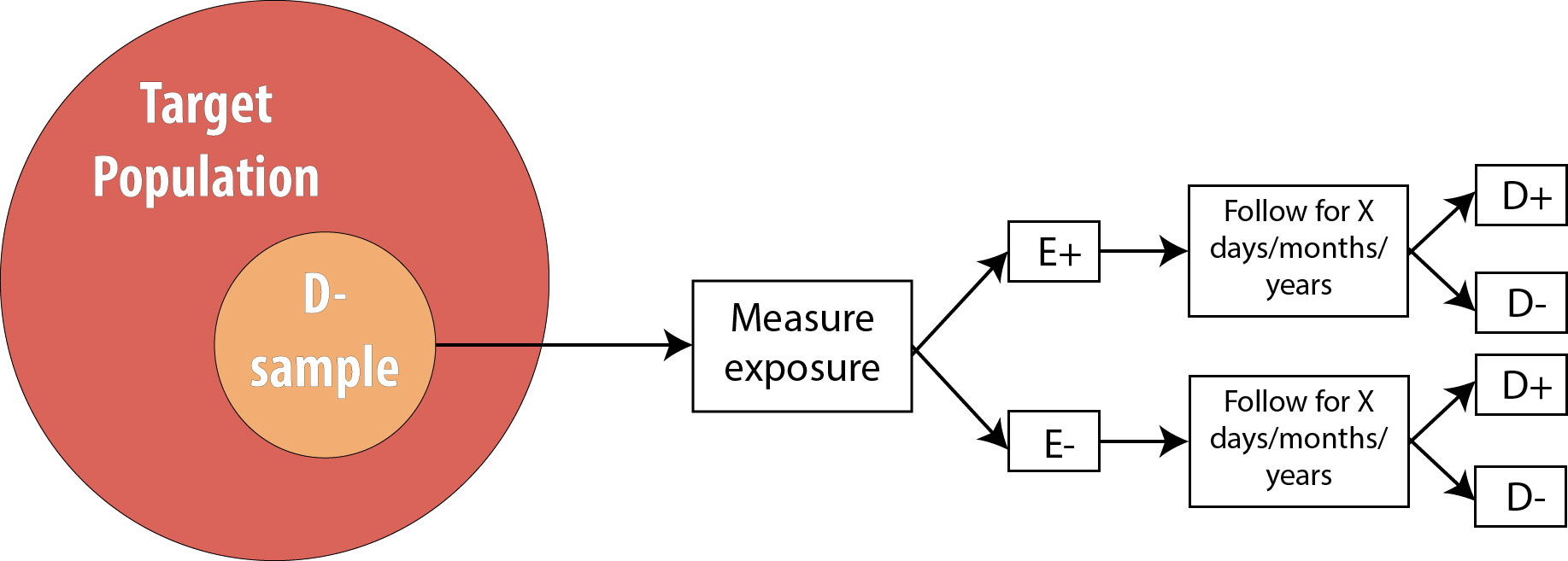



Introduction To 2 X 2 Tables Epidemiologic Study Design And Measures Of Association Foundations Of Epidemiology
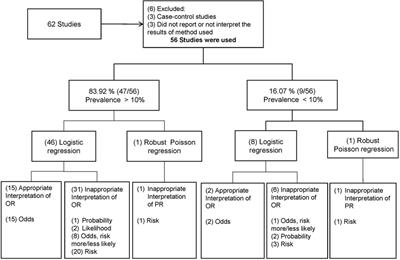



Frontiers Odds Ratio Or Prevalence Ratio An Overview Of Reported Statistical Methods And Appropriateness Of Interpretations In Cross Sectional Studies With Dichotomous Outcomes In Veterinary Medicine Veterinary Science



Case Control Study Vs Cohort Study Pp Made Easy On Vimeo
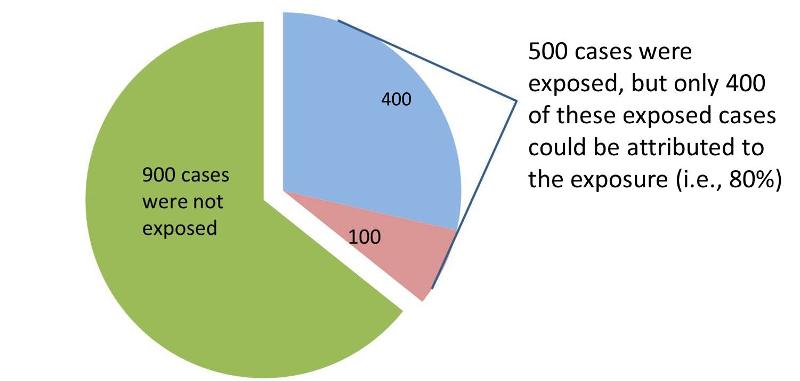



Measures Of Association




Definition And Calculation Of Odds Ratio Relative Risk Stomp On Step1



Q Tbn And9gcr Ttka12jaocnx Gn3ox9ci1ggq18vcw9359i6hq2cschyusam Usqp Cau



Silo Tips Download Transcript Measuring Risk In Epidemiology B D A C Measuring Risk In Epidemiology



Icare An R Package To Build Validate And Apply Absolute Risk Models




Measures Of Effect Relative Risks Odds Ratios Risk Difference And Number Needed To Treat Sciencedirect




Relative Risk And Odds Ratio



Q Tbn And9gcs7g3 Oy3gxo7fbk7uvklwexnnbqcmd7m5bqd Ghq64ww9hd4dh Usqp Cau
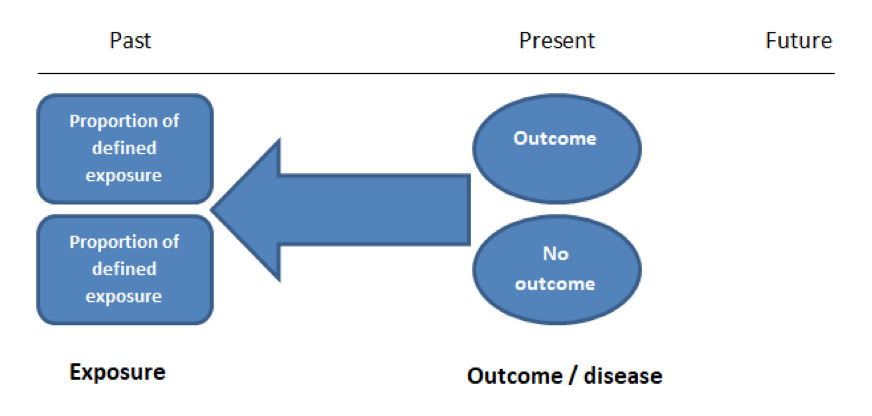



Case Control And Cohort Studies A Brief Overview Students 4 Best Evidence
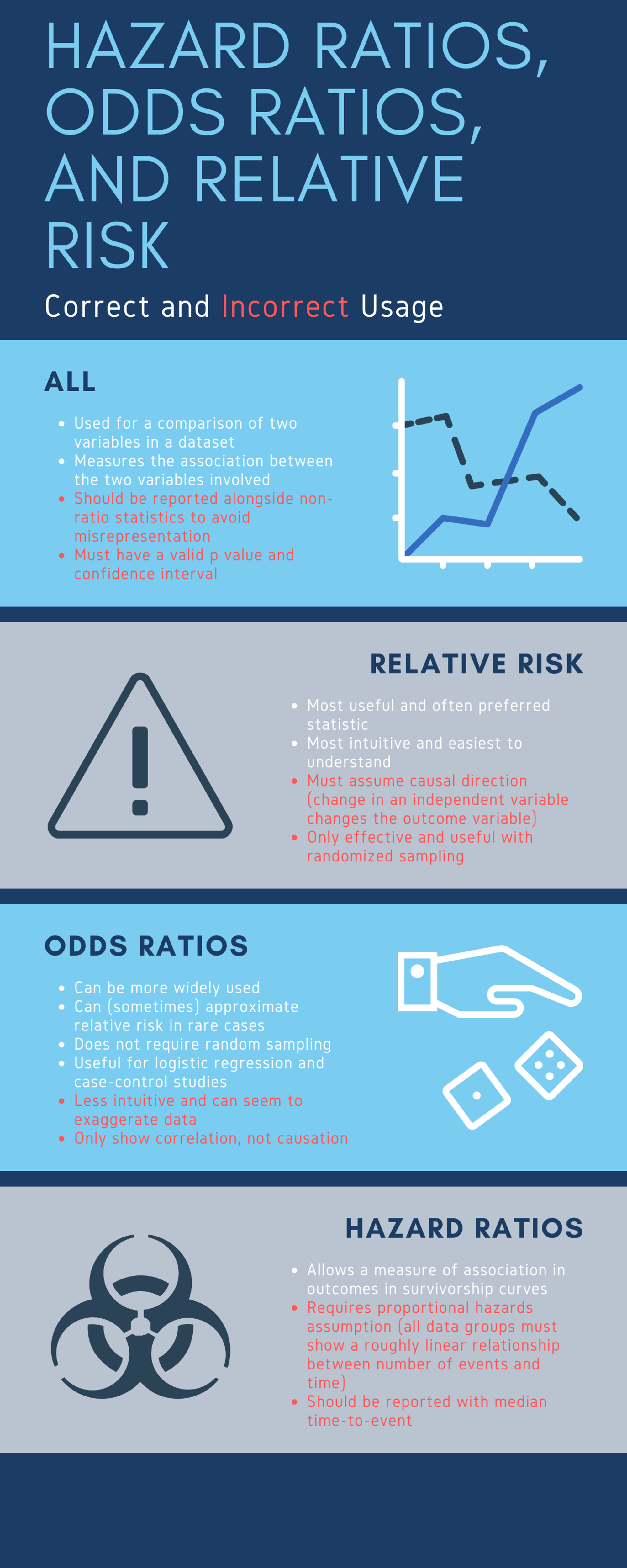



Cureus What S The Risk Differentiating Risk Ratios Odds Ratios And Hazard Ratios
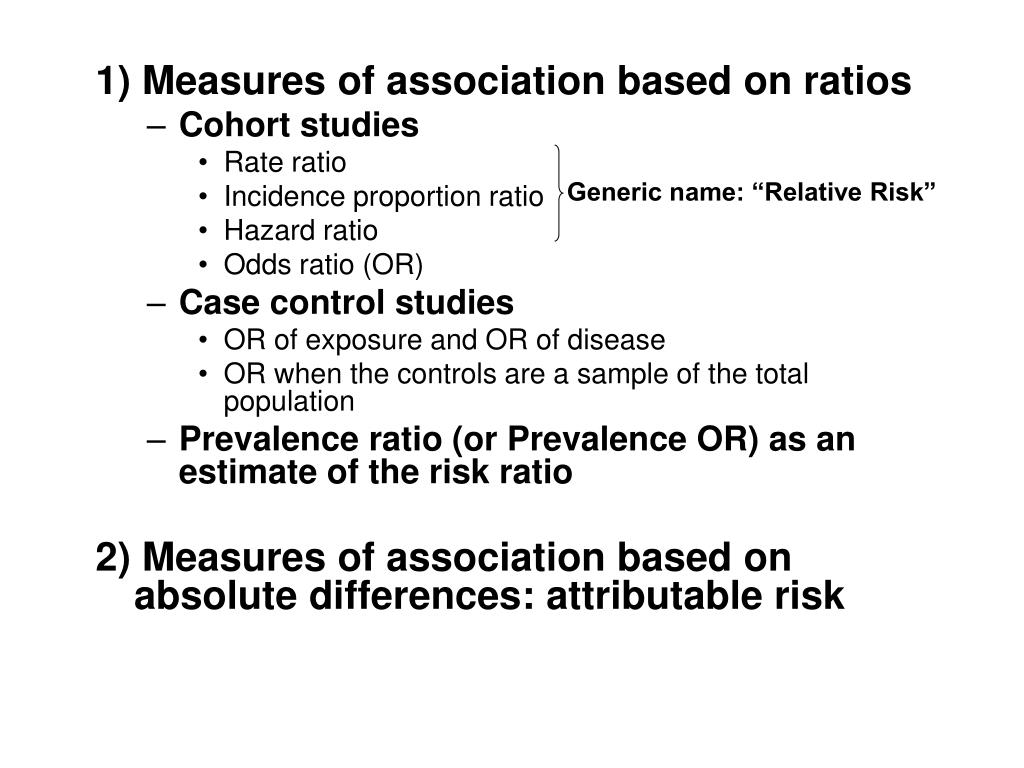



Ppt Measures Of Association Powerpoint Presentation Free Download Id



Escholarship Umassmed Edu Cgi Viewcontent Cgi Article 1013 Context Liberia Peer




Calculation Of Relative Risks Rr And Odd Ratios Or Download Table
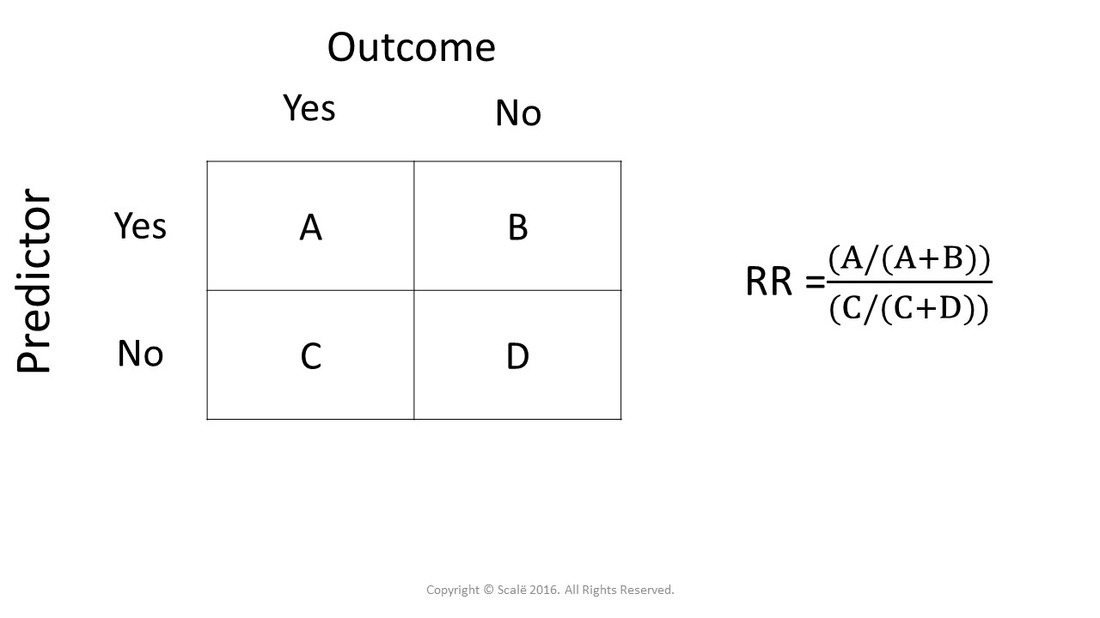



Calculate Relative Risk With 95 Confidence Intervals



Q Tbn And9gctxz8owky Sul84xtk4ggzacxwhkmhguhlxwyjj9avufagdrhwm Usqp Cau



Www Nature Com Articles Pcrj006 Pdf Origin Ppub



Population Perspective Made Easy On Vimeo
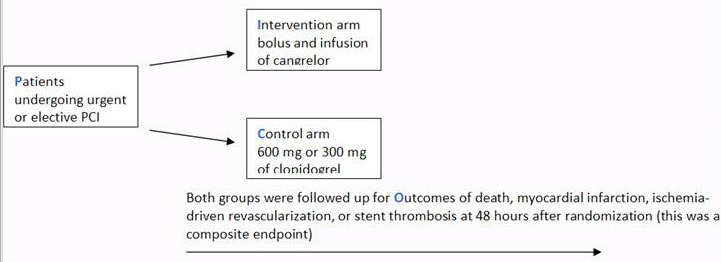



A Beginner S Guide To Interpreting Odds Ratios Confidence Intervals And P Values Students 4 Best Evidence




A Beginner S Guide To Interpreting Odds Ratios Confidence Intervals And P Values Students 4 Best Evidence
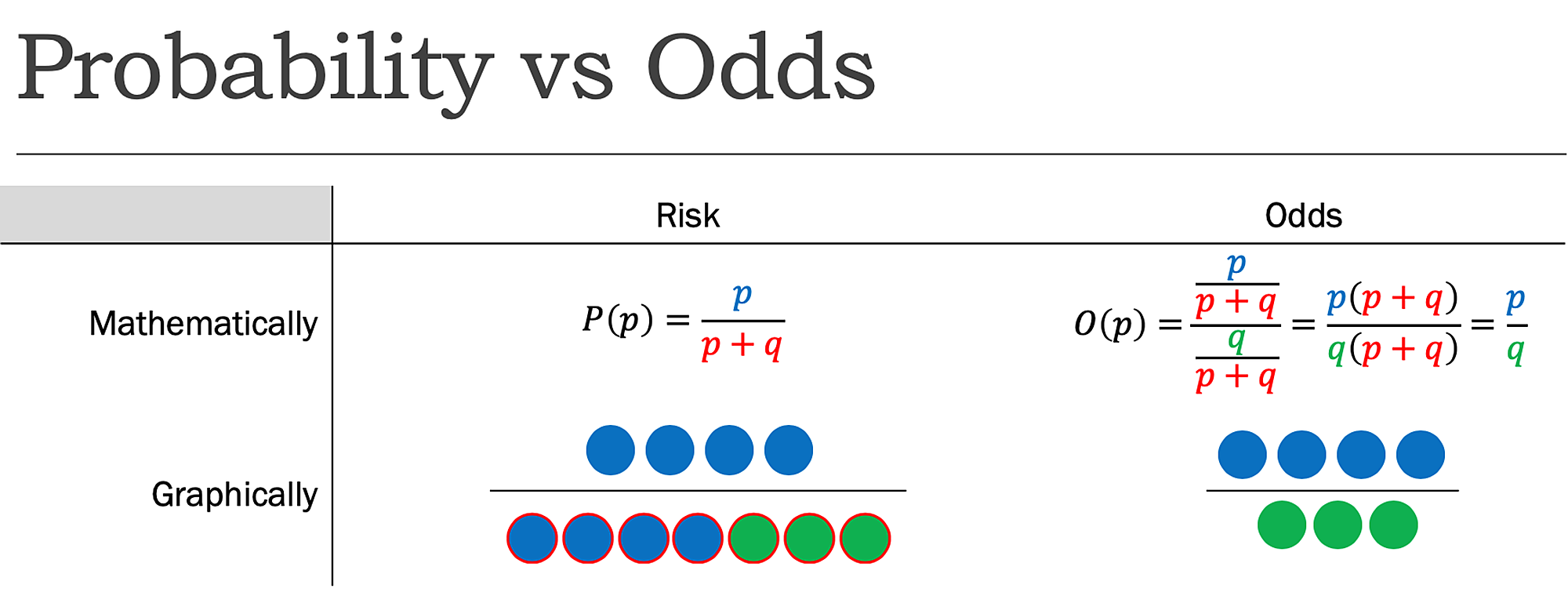



Cureus What S The Risk Differentiating Risk Ratios Odds Ratios And Hazard Ratios




Cohort And Case Con Revised




Using Odds Ratio In Case Control Studies Youtube




How To Use Spss For Contingency Table Relative Risk Odds Ratio




Relative Risk Odds Ratios Youtube




Gordis 12 Biostatistics Risk Relative Risk Odds Ratio Flashcards Quizlet




Relative Risk And Odds Ratio Usmle The Journey



Case Control Study Odds Ratio Relative Risk Best Custom Academic Essay Writing Help Writing Services Uk Online Homeworknowcomlink Web Fc2 Com
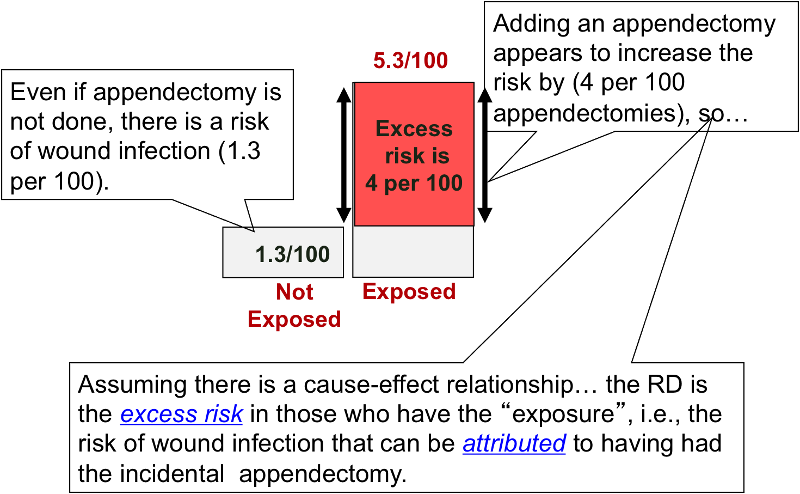



Risk Differences And Rate Differences




Analytical Studies Note Cohort Study Gives Incidence Relative Risk A R P A R Natural History Of Disease Cohort Study Case Control Study Study



0 件のコメント:
コメントを投稿